 Upon returning from our recent expedition to four African countries, our National Geographic tour leader, Dr. Bill Branch, prepared a recap of our experience. I asked for and received permission from Bill to publish his “Farewell Letter” to us on Alfieland.com. He was gracious in granting such. There were seven in our party…a family of four adults from Denver including a physician and a retired geologist along with Nancy, Kaitlin and yours truly. We traveled by small private aircraft from South Africa to Namibia then on to Botswana. Nat Geo then handed us off to another operator to enter Zimbabwe since they do not conduct business in that country for a variety of reasons.
Upon returning from our recent expedition to four African countries, our National Geographic tour leader, Dr. Bill Branch, prepared a recap of our experience. I asked for and received permission from Bill to publish his “Farewell Letter” to us on Alfieland.com. He was gracious in granting such. There were seven in our party…a family of four adults from Denver including a physician and a retired geologist along with Nancy, Kaitlin and yours truly. We traveled by small private aircraft from South Africa to Namibia then on to Botswana. Nat Geo then handed us off to another operator to enter Zimbabwe since they do not conduct business in that country for a variety of reasons.
Nat Geo Safari: Namibia & Botswana by Private Air
June 28 – July 9, 2017
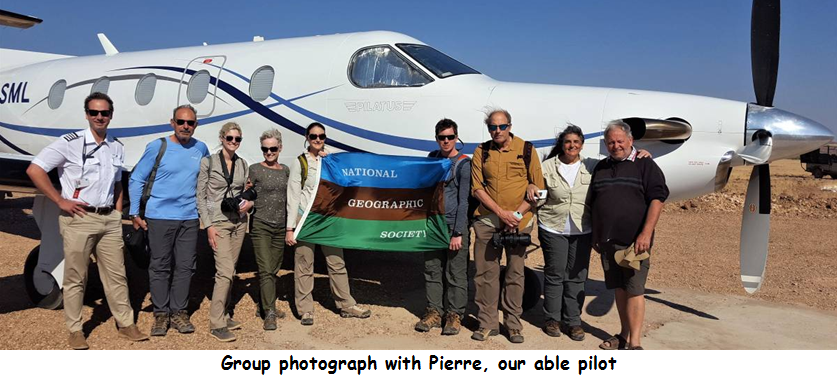 Hi everyone!
Hi everyone!
On behalf of National Geographic I hope you are all well and traveled safely after we parted on the deck of the fabulous Selinda Camp in northern Botswana. Firstly let me apologize for the delay in sending you this farewell letter. As you know I went straight off on another National Geographic trip, this time to Uganda and Rwanda to trek for the great apes – chimpanzee, gorilla, and numerous other monkeys. It was a great trip, but it has taken longer than I had hoped to catch up with things. I hope that you all got home safely, and that your post-trip extension into Zimbabwe went well. Nancy has already mentioned that you had ‘delays’ at the Zimbabwe border crossing entering the country. I hope that you were therefore spoilt at Matetsi and enjoyed the wonders of Vic Falls.
Our journey started at the Cradle of Mankind in South Africa, at one of the world’s richest fossil records of our origins. The finds of Homo nedali that Marina showed us have engendered much debate about just how early in hominid history our consciousness started the unfinished deliberations on what it all means !!

We then started our real exploration of the African landscape and its amazing fauna and flora, and to see first hand how ecotourism at both grass root and luxury lodge level, can work synergistically to protect the environment and the wildlife that depends on it. In Namibia we visited the scenic beauty of the world’s oldest desert, and saw how the vagaries of falling water affect life. Much of the South African Cape region is currently affected by severe drought, and dependable rain is becoming a memory as fires devastate woodlands in Mediterranean climates, from California to western Australia, and Corsica to Knysna.
Sossusvlei is surrounded by the red dunes of the southern ‘dune sea’ of the Namib Desert, with some of the tallest sand dunes in the world rising to nearly 500m. The Kulala Wilderness Reserve, where our lodge was situated, is a private reserve adjacent to the Namib-Naukluft National Park and Sossusvlei. The younger members of the group (young in heart, in your case, Al !) tackled the daunting climb of “Big Daddy” whilst others walked to Dead Tree Vlei and spent time chasing trees to photograph in the morning light.
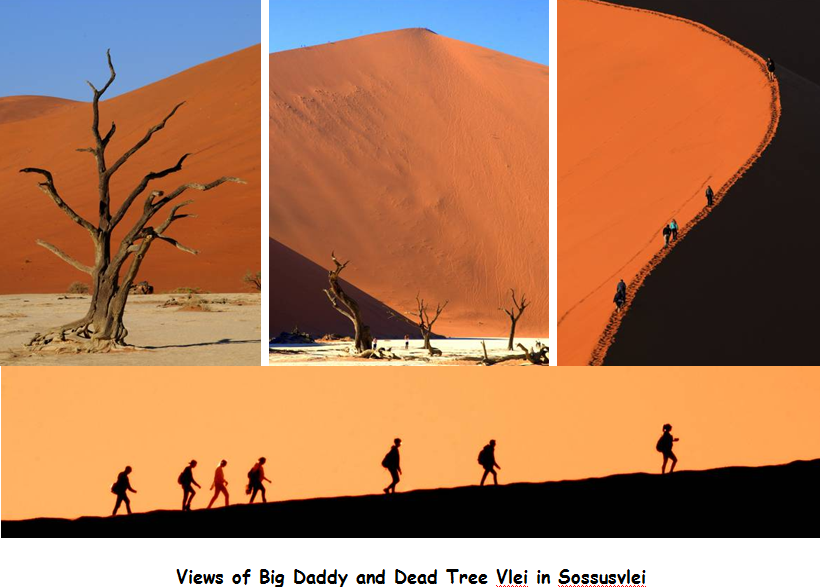
In Damaraland we visited the Desert Rhino camp to track the rare desert rhino, and understand the poignancy of how such a magnificently robust, tank of a mammal can be so drastically reduced by poaching for a traditional medicine that has no scientific basis. That it has become such a globally serious problem is because rhino horn is used as a proxy by organized crime to transfer ‘money’ across international borders. It highlights the conflict between the survival of Africa’s unique megafauna, and the complex demands and interactions of a burgeoning human population.

The staff at the various camps treated us to memorable sundowners, and at the Desert Rhino camp a spokeswomen from the local Toria Conservancy talked around a campfire to us about this unique co-operation, and how the local community benefits with work and income from a partnership in conservation.
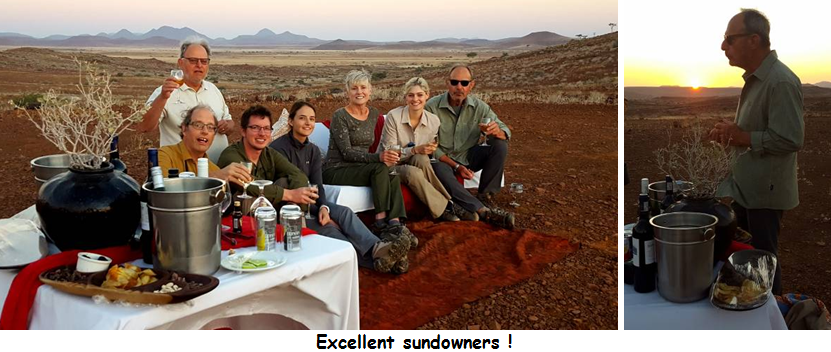
Our full day game drive in Etosha National Park for the first time revealed the diversity and complex interaction of African mammals, as herds of zebra, gemsbok, springbok, giraffe, wildebeest, warthog, etc, roamed the grasslands, each adapted to its special niche. It contrasted with the monotony and wastefulness of farms dedicated to the monoculture of livestock such as cattle or sheep. Finally we found elephant, with a typically relaxed, dispersed herd of bulls, all covered in white clay from mud baths and ignoring our presence.

The trip ended with the sheer beauty of the Selinda Tented Camp, which sits near the confluence of the Linyanti, Savute and Kwando Rivers, on the northern edge of the Okavango Delta ecosystem. Photographic opportunities burgeoned: a large lioness with three young cubs at the carcass of a young elephant; trees festooned with vultures and a hyena circling in the distance; herds of impala, and zebra and hippo in a small pan filled with muddy water and duckweed; adult Ground Hornbill with a full grown chick; and the best – a monster crocodile, well over 4m of teeth and tenacity, alert and deadly and allowing us within 20ft !

… and on our final morning, before we headed off on different paths of our journeys, the fleeting glimpse of spots and power in the long grass as a leopard burst out and became a memory; ……. and yet still it wasn’t over, as later in the twilight of our final game drive we found a small pack of painted dogs at an almost finished impala kill, with just enough light to see and admire these beautiful and critically endangered predators (<5000 left), and to realize (if you were still counting) that had seen the Big 5 + 1 !!
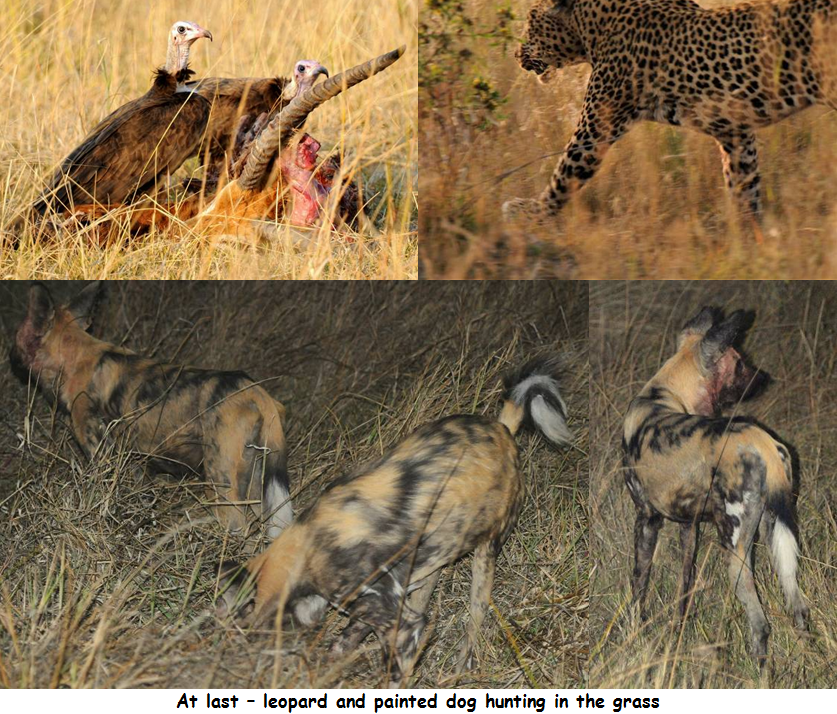
As I pointed out during our drives in Etosha and Selinda, where the impact of elephants on vegetation was particularly evident, these grey giants dominate African ecosystems. They have rightly been called ecological engineers, and during our game drives we saw them in different habitats and varying densities. Their numbers even in harsh environments can become significant, and their impact often reduces trees to ‘orchards’. Elephant have strong family bonds, and this was evident in Selinda where breeding herds wandered silently in the bush. With the quiet dominance of the mature females, the gangly enthusiasm of the young, and the periodic belligerent preoccupation with sex and power of the bulls, elephants can remind us of ourselves. As I emphasized in my discussions elephant numbers, like our own, can exclude other life and severely impact their environment. They are both a Flagship for Conservation and a warning of our own profligacy. Their fate in landscapes where their numbers outstrip their resources should warn us of what we have become, and what we also do to this fragile Earth. But even elephant numbers, unlike those of human, are falling rapidly. A decline in African savanna elephant populations of 30% (equal to 144,000 elephants) was recorded in only 7 years (2007-2014), with the biggest declines noted in Tanzania and northern Mozambique. The biggest cause of this slaughter is ivory hunting.
I know you all enjoyed the lodges, which were without fail comfortable and attentive. No one went home hungry (!) and at every lodge the staff entertained us with traditional song and dances during the evening meals. In my talks, both formal and at the bar or dinner, I tried to introduce you to the complexity and subtlety of biodiversity, and to stimulate an appreciation of the multiple Layers of Life. I want to repeat my recurrent theme; that Africa is unique and that the central challenge facing conservation on the continent is to find ways to retain the last of the World’s megafauna, and yet also to uplift the lives of Africa’s people. It is to finding this balance that National Geographic is dedicated. I hope that the treasured memories of your safari will bring pleasure in the years to come. I’m sure the wildlife, stars, sunsets, and happiness of African people will live you forever.
To help you remember I have attached a checklist of the mammals, birds and ‘lower’ vertebrates that we saw at the various locations. Scattered through this letter are some of my own images from the trip – I’m sure you remember them and also have similar shots that remind you of Africa. Again, on behalf of National Geographic I wish you all best wishes and happy traveling. I hope that we can meet again someday under African skies.
With best wishes —- Bill Branch
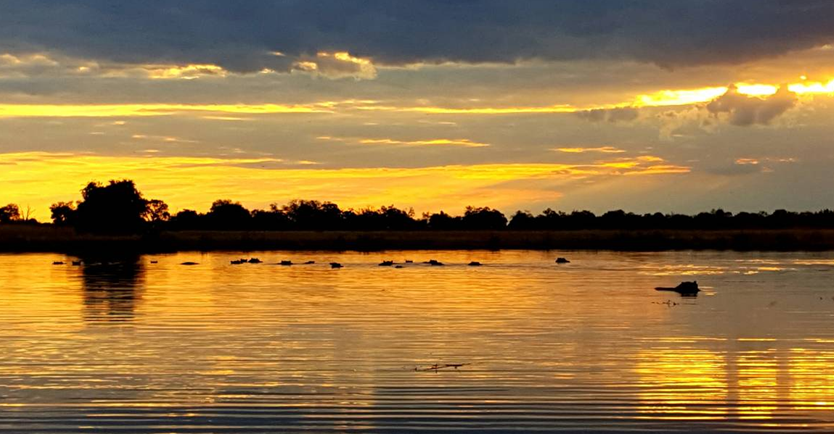
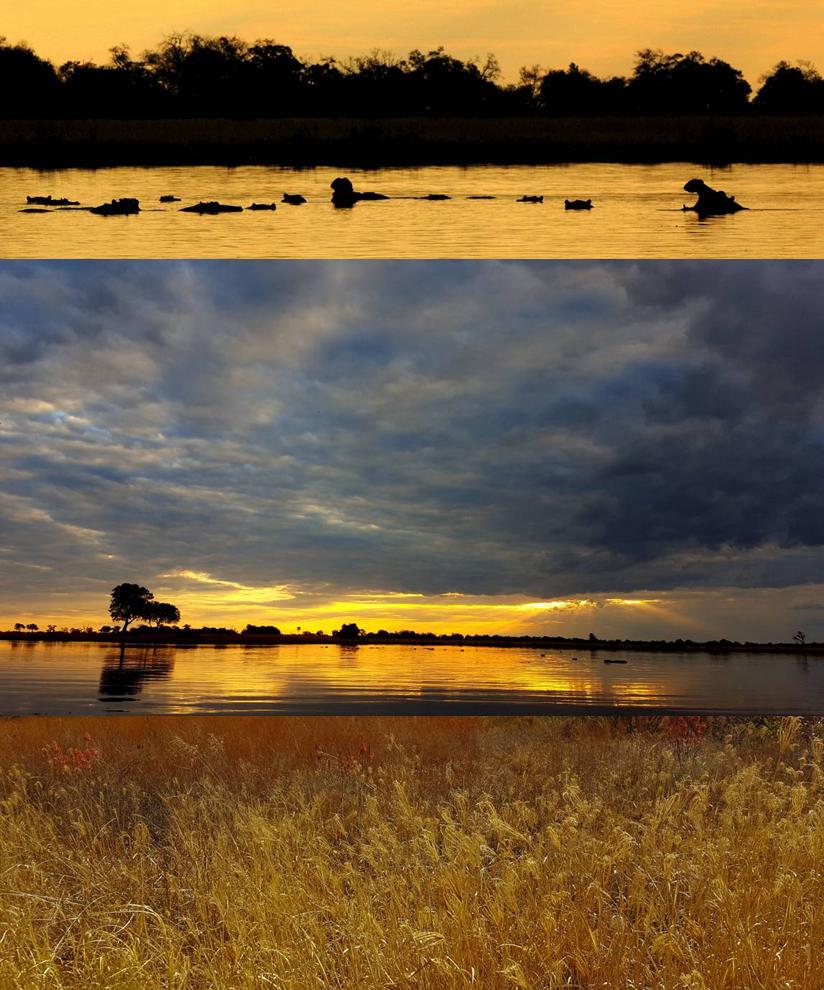
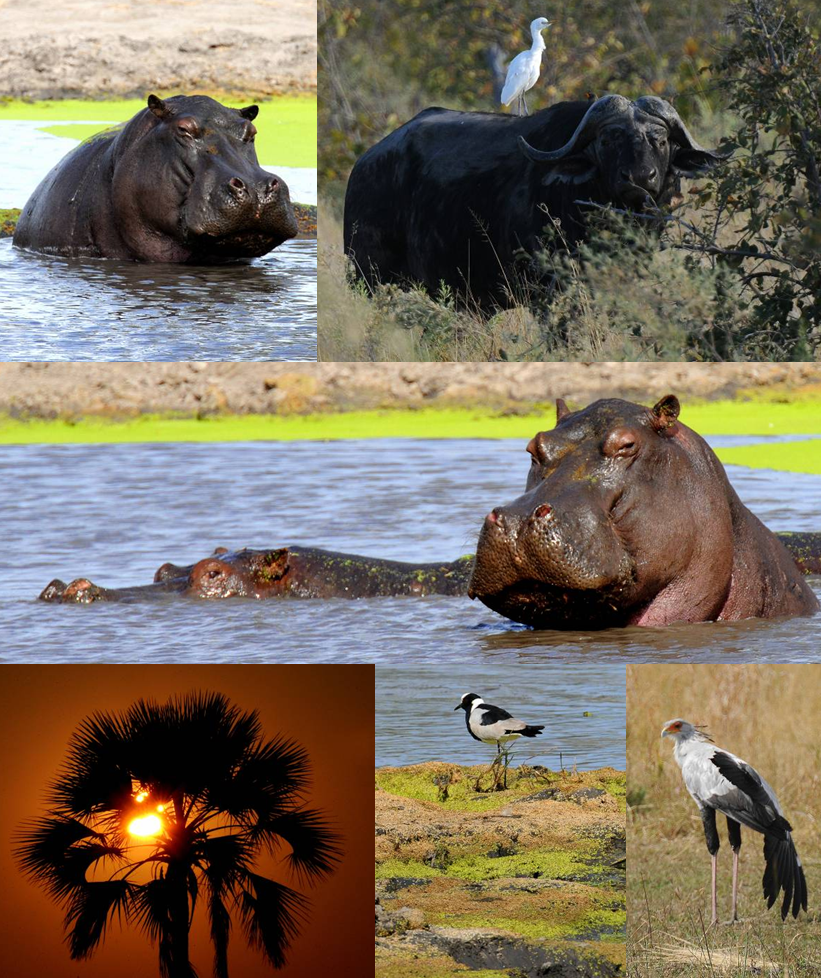

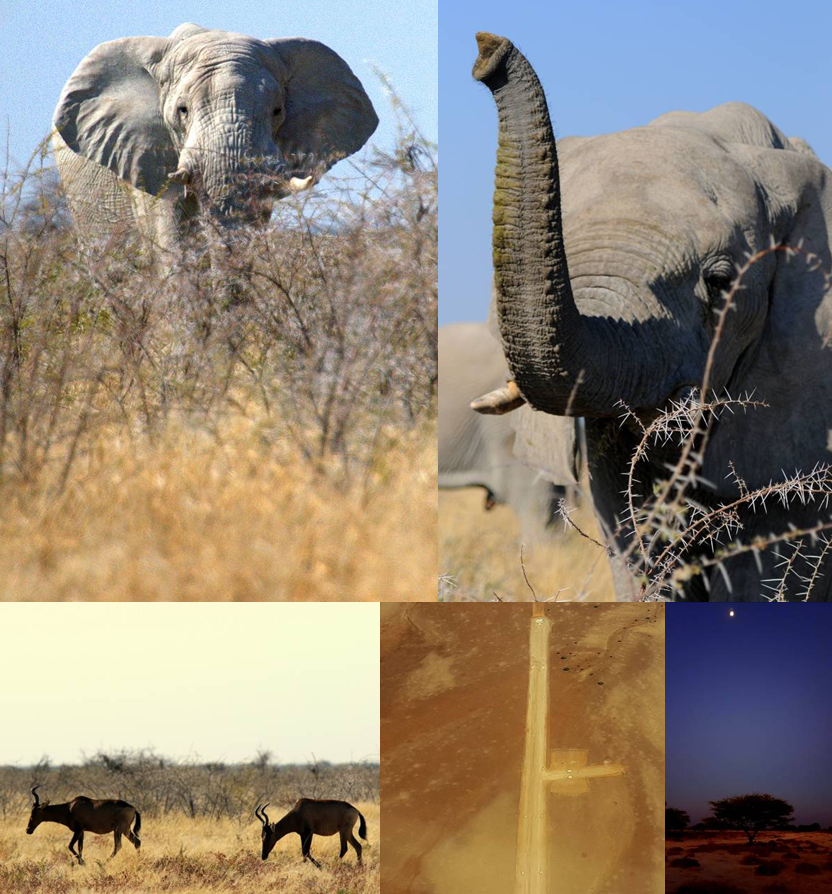



Anytime Nat Geo offers the trip is the right time to go. They will not steer you wrong.